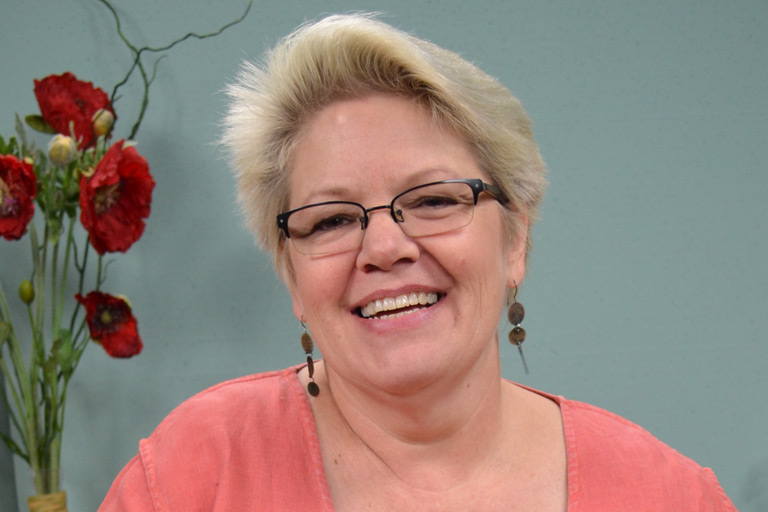
Using Alternative and Unique Fabrics in Your Quilts
Heather ThomasQuilts don’t have to be made only using quilting cotton, especially if you are making art quilts. Heather Thomas shows you several different alternative fabrics to try out in your next quilt.
Silk
Heather shows a variety of different silks that can be used as your next quilting fabric. Some of them include silk charmeuse, silk velvet and silk dupioni. Silk charmeuse is a lightweight, woven fabric. Because of the way it is made, the right side of the fabric has a nice luster while the wrong side is more dull. Silk velvet is a very soft, plush fabric that is lighter weight than standard velvet. Silk dupioni is a rather rough, woven silk fabric with a slight iridescent look. While all of these silks can be incorporated into your next quilt, Heather explains that some of these unique fabrics require additional preparation to make them easier to work with. Heather recommends fusing a permanent, woven interfacing to the wrong side of the fabric before cutting and quilting begins.
Other Unique Fabric
Some of the other unique fabrics Heather shows include cotton twill, canvas and linen. Twill refers to the type of fabric weave and is constructed with both diagonal and parallel ridges. A cotton twill is this kind of weave using raw cotton. While canvas is generally thought of as a home decor or outdoor use fabric, it is a heavier weight fabric that can actually add a lot of structure to a quilt.
When it comes to using new unique fabrics in your next quilt, one of the easier ones to work with may be linen. Heather explains that all of these fun, unique fabrics can be easily added to a quilt or even used to make the entire quilt, as she shows with several examples.
Most of us quilt makers were trained to use a particular type of cotton fabric with a relatively low thread count to make our quilts with. A lot of people don't realize that you can use lots of different fabrics to make quilts with, especially if you like to make art quilts. But even if you like to make bed quilts and throw quilts. Here, I have this wonderful kind of array of different fabrics that I think are perfectly suitable for making quilts with. If we start here, we have a silk charmeuse.
Then a silk velvet, a cotton velvet, a cotton twill, a lightweight canvas, a very fine wale corduroy, a pineapple silk, which is made from pineapple fronds, a Chinese silk Dupioni an Indian silk Dupioni, raw silk, linen, and rough-hewn silk. If a fabric behaves like that cotton that we're used to using, such as this pineapple silk. It has very little stretch in either the crosswise grain or the lengthwise grain. We can use it just as it is. If a fabric moves and shimmies and drapes, however, like this velvet or this silk charmeuse, it's going to work best if we put a iron-on, permanent iron-on non-woven stabilizer on the back.
And we simply iron this to the surface, the back surface of the fabric, and then cut it and sew it like we normally would. These two quilts are made with alternative fabrics. This is a linen, just like this linen right here. And this is a very slubby Indian Dupioni silk, like this slubby Indian Dupioni silk here. And then this piece is made entirely out of velvet and this very silky, shimmery movie velvet.
Because it's made out of velvet and I didn't piece it though, I didn't put any stabilizer on the back. I used the batting and the backing as the stabilizer during the quilting process and it worked just great. So you can try and explore the use of all sorts of different fabrics for your quilts. You don't have to stick with that regular old quilters cotton. And you can add a little bit of oomph, something different, something fun, to your next quilt.


I am wondering if I could use an art silk poster as a center fabric for a quilt I am making. Old how it would hold up over time and with use and washing. The quilt is one for my son, who is 7. I could not find a comparable traditional fabric with the design I wanted on it. Please lmk what you think.
Thank you! Very informative. Looking forward to experimenting with other fabs that l have in my stash!